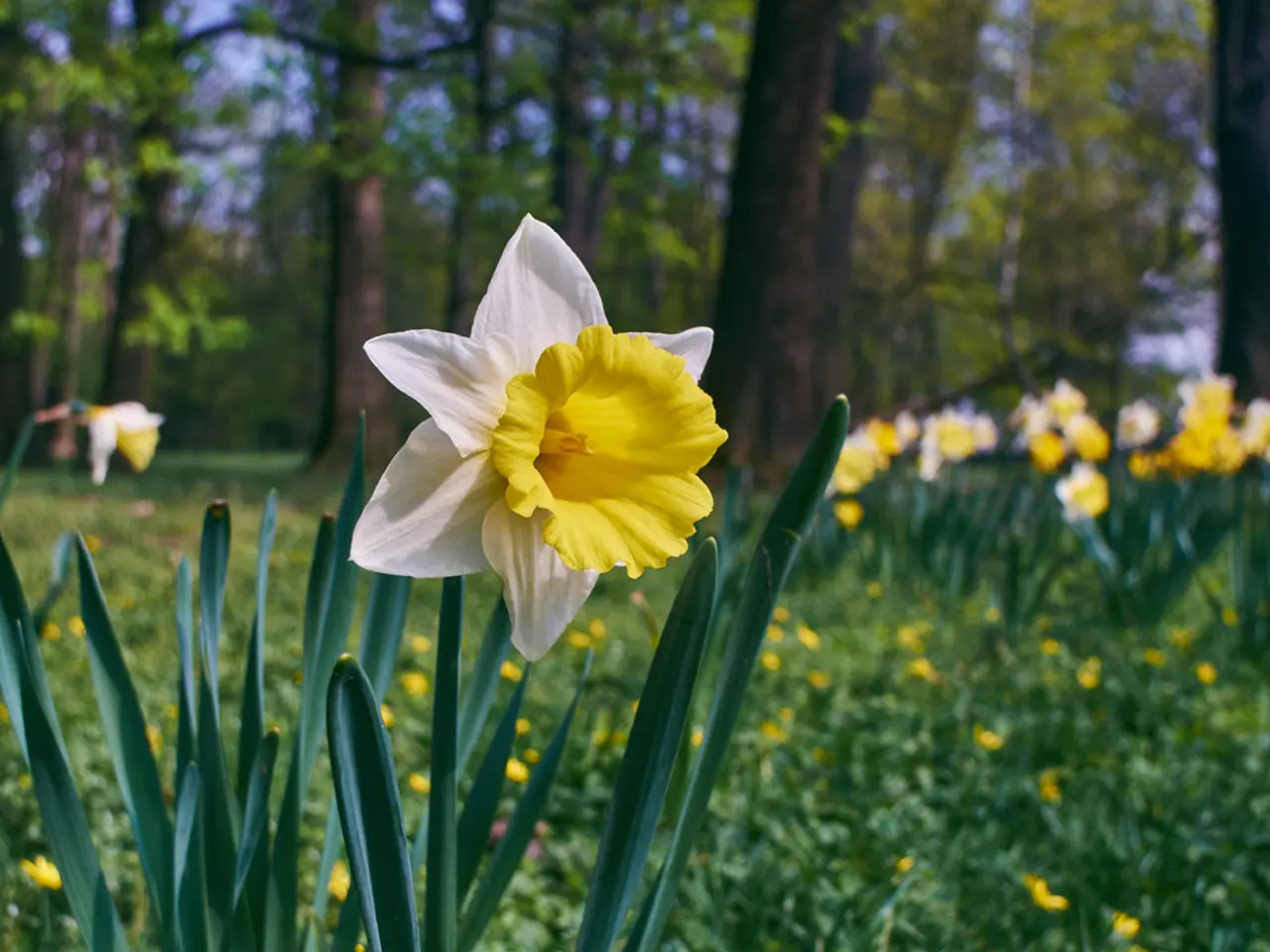Seven delightful flowering trees ideal for blooming magnificently in small yards and containers
Small Flowering Trees Ideal for Small Yards with Year-Round Appeal
For homeowners with small yards, finding trees that offer beauty and interest throughout the year without overwhelming the space can be a challenge. However, there are several small flowering trees that are perfect for such spaces.
The Vernal Witch Hazel (Hamamelis vernalis) is a great choice for those seeking winter interest. This tree blooms with fragrant yellow flowers in the cooler months, contributing to the winter landscape. It thrives in full sun to part shade and prefers well-drained, rich, and organic soil.
Another tree with multi-season appeal is the Japanese Tree Lilac (Syringa reticulata). This compact tree offers attractive blooms in the spring, followed by good fall foliage. It grows best in full sun and requires loose, rich soil with proper drainage.
Serviceberry (Amelanchier spp.) is another versatile small ornamental tree that provides four-season interest. It grows best in full sun to part shade in USDA zones 4 to 9. Serviceberry varieties like 'Autumn Brilliance' grow 15 to 25 feet tall and offer good disease resistance.
The Star Magnolia (Magnolia stellata) is an excellent choice for small front yards or tight backyard spaces. It blooms early in spring with white, star-shaped flowers and grows between 10 to 15 feet tall. It prefers moist but well-drained soil.
Eastern Redbud (Cercis canadensis) is known for its spring pink-purple blooms and compact, graceful growth. It typically grows around 15 to 25 feet tall and tolerates a wide range of soils. 'Ruby Falls' and 'Little Woody', dwarf cultivars of Eastern Redbud, offer more compact growth.
American Fringetree (Chionanthus virginicus) is a delicate native tree that produces creamy white fragrant blooms in spring. It adapts well to urban settings and grows 12-20 feet tall. In summer and fall, it produces bluish-black berries.
Wintersweet (Chimonanthus praecox) is a small tree with winter color and interest, growing best in full sun to part shade in USDA zones 7-9. It blooms with yellow fragrant flowers in the winter, making it an excellent choice for small spaces.
Crape Myrtle (Lagerstroemia indica) is a popular choice for small yards due to its dwarf varieties, which reach about 6-20 feet. It produces long-lasting blooms in multiple colors from mid-summer through fall, is drought-tolerant, and requires low maintenance.
Chaste tree (Vitex agnus-castus) is an ideal tree for hot, dry areas. It produces lavender-blue flower spikes from summer into fall and is drought-tolerant.
Dwarf River Birch is a resilient native tree with striking bark, small, delicate flowers, and tolerance for wet soil conditions. The cultivar 'Little King' (also sold as 'Fox Valley') stays a manageable 10 to 12 feet tall and is well-suited to small gardens with poor or wet soil.
Lastly, the Japanese Tree Lilac (Syringa reticulata 'Ivory Silk') is a large option for small yards, with creamy white blossoms appearing in early summer and hardy in USDA zones 3 to 7.
These trees combine compact size with multi-season interest, featuring attractive blossoms, berries, and/or foliage color, making them well-suited for small yards without overpowering the space. When selecting a tree, considerations such as mature height and spread, root system, light exposure, and maintenance needs should be taken into account to ensure the tree fits well in your specific yard. For year-round interest, trees like Serviceberry and American Fringetree provide blooms, fruit, and color changes across seasons.
The Serviceberry tree, especially the 'Autumn Brilliance' variety, offers four-season interest in small yards and grows well in full sun to part shade in USDA zones 4 to 9.
The Wintersweet tree, suitable for USDA zones 7-9, blooms with yellow fragrant flowers in the winter, making it a great choice for small spaces seeking winter color and interest.





